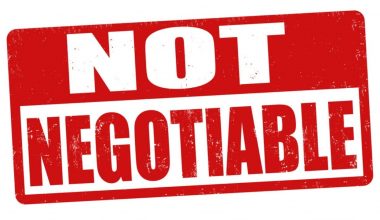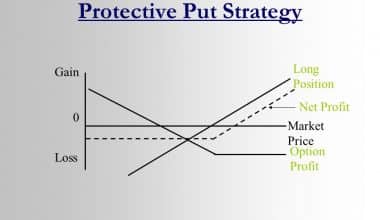The distinction between behavioral intentions and actual consumer behaviors should be made when measuring customer retention. Based on the idea that behavioral intentions serve as a good predictor of future behavior, it is assumed that customers who indicate a stronger intention to make a repeat purchase will likewise display a stronger related behavior. Finding new clients costs more money than enticing existing customers to make a second transaction. It holds true for a lot of companies, particularly in the congested e-commerce space where the cost of clicks and conversions always seems to be rising. Customer retention expertise looks like this.
Customer Retention
Client or customer retention is the ability of a business or product to keep its customers for a predetermined amount of time. Substantial customer retention refers to the tendency of customers to use a product or business again, keep buying it, or refrain totally from switching to another one or using it at all. The goal of selling organizations is often to decrease client churn. Successful retention strategies take into account the full customer lifecycle, which begins with the first interaction an organization has with a client and continues throughout the duration of a relationship. In addition to a company’s product or services, its ability to draw in and keep customers depends on how well it treats its current clients and how much those clients are worth.
Giving customers what they anticipate is only one aspect of successful customer retention. By exceeding customers’ expectations, a brand may be able to attract devoted supporters. Customer value, rather than increasing profits and shareholder value, is placed at the core of business strategy through cultivating customer loyalty. Delivering consistently excellent customer service is frequently the primary differentiator in a market. Retention is also a key goal in the developing field of customer success.
Strategy for Customer Retention
Understanding the underlying, important KPIs is the key to raising your customer retention rate. What are these measures? What’s more, how can you make them better? By providing you with the information you need, you can create a customer retention strategy that will significantly and sustainably increase the profitability of your store. Let’s take a closer look at some of the most crucial customer retention strategies and consider why they are significant
#1. Boost your customer service.
Support systems assist you in providing your clients with the appropriate level of support and in communicating with them efficiently. Whether a consumer contacts you on-site, via email, or through social media, having a live chat or helps desk tool available can turn their inquiry into a sale or their grievance into a remedy.
#2. Publish Interesting Emails
Using emails, you may establish a strong rapport with customers both before and after their initial purchase. Useful first steps include sending follow-up emails. Send a “thank you for your purchase” email to a consumer a week after their first purchase.
#3. After the Initial Purchase, Send a Discount.
Sending a coupon code for their next purchase along with their first-time order is a fantastic way to encourage them to make another purchase. For this reason, offering discounts can also be a successful strategy for reactivating clients who haven’t made a purchase in a while.
#4. Obtain Customer Feedback.
Customers who receive feedback can participate and feel heard. Your consumers will feel more invested and consequently more loyal if they believe that their input is valued rather than being treated as a number on a spreadsheet.
#5. Launch a Loyalty Program for Customer
Customers are encouraged to make more frequent purchases through brand loyalty programs, also known as customer retention programs, which are efficient strategies for boosting purchase frequency.
Customer Retention Rate
The customer retention rate (CRR) is the percentage of existing customers who remain customers after a given period. Your customer retention rate can help you better understand what keeps customers with your company, and can also signal opportunities to improve customer service. Once you understand how well or poorly your company retains customers, you can work to improve your customer retention rate. Different methods can be used by businesses to determine their customer retention rates. It all depends on the time frame you’re looking at, yet too many factors are used by many marketers.
Consider a scenario in which you have 2,000 ongoing clients after two months. 900 of them come back to you throughout that time to make additional purchases. These are the two figures you’ll need to figure out your customer retention rate. They are not a factor in the decision. Only those customers who made a purchase from you before the two-month start date should be considered current customers.
The initial interaction is when customer retention starts. The client can join your email list or “support” your page on Facebook. Unless the customer takes explicit action, such as unfollowing your page or unsubscribing from your email list, the relationship will continue.
You only need three numbers to calculate your customer retention rate:
- Customers at the beginning of a specified period
- Customers at the end of that time frame
- Newly recruited clients throughout the time
Take the total number of customers you have at the end of the period and subtract the number of new customers you gained during that period to determine your customer retention rate. Then divide that figure by the initial number of clients.
It looks like this: CRR = ((E-N)/S) x 100.
Customer Retention Formulae
Customer retention rate is the number of clients a business keeps over time. It is shown as a proportion of current clients who stick with a business during that time. For instance, if your company has 10 clients at the beginning of the year and loses two of them, your retention rate is 80%. But keep in mind that your customer retention rate is a little more complicated than that. To prevent your data from being tampered with, you must also take into consideration any new clients you have acquired.
Actually, if you believe you or think you can just balance customer attrition by bringing in new ones, you can end up neglecting serious problems with your company. A company’s marketing strategy and customer service program can be measured by closely observing retention metrics, essential for grasping lifetime customer value.
How Is the Client Retention Rate Formulae Determined?
1. Choose the time period you wish to study before you can calculate your retention rate.
2. Next, count the total number of customers at the beginning of the time period (S), and finally, determine the total number of customers at the conclusion of the time period (E).
3. Lastly, ascertain the quantity (N) of new clients added over the time frame.
When you have this information, you may enter it into the formula for the retention rate. Retention is assessed by certain businesses annually, quarterly, monthly, or regularly. Fast-moving SaaS businesses with wildly fluctuating user bases may even review this data on a daily basis.
Use the following formula to calculate client retention rate: 100 x [(E-N)/S] = CRR
Why Is Customer Retention Important?
Even if it takes a lot of work to draw in prospective customers, this is merely the beginning of a protracted process of developing a devoted following. Having content and satisfied consumers will benefit your company greatly, help you save money, and even help you develop brand ambassadors. Focusing on client retention makes sense for a variety of reasons, including:
#1. Increasing the Average Order Value
A strong customer retention rate indicates that your customers have faith in your brand and business. They are therefore more inclined to make larger purchases each time they visit your business.
#2. Increase Revenue
Long-term clients are more likely to experiment and try different products from reputable brands and affiliated businesses. Profits across all product lines grow when customers are happier.
#3. It Is More Cost-Effective to Market to Repeat Customers.
Keeping your current customers is more cost-effective than looking for new ones. Businesses may upsell or cross-sell to their customers more successfully since they already have a relationship based on trust and product satisfaction. Repeat business is common among loyal clients, making them lucrative. Increasing client retention can significantly boost earnings by increasing the likelihood that a customer will become a devoted, repeat customer.
#4. Reliable Current Customers Will Recommend Your Business to Others
Your most ardent supporters are your current clients. If they are satisfied with your service and products, they will naturally and legitimately recommend you to others. Referrals from devoted current clients can take many different shapes, including:
- Positive recommendations from others
- Posts and messages about your brand on social media
- Positive remarks and testimonials that are visible to everyone on public pages messages from your brand’s referral programs
What Is Customer Retention and Why Is it Important?
Customer retention ultimately involves developing relationships with your current clients, giving them something of value throughout every engagement, and creating memorable experiences for them. It’s about exceeding consumers’ expectations and cultivating loyalty that motivates them to keep coming back to buy your goods or services.
What Are Examples of Customer Retention?
Illustrations of customer retention tactics?
- Give a discount to patrons who come back.
- Set up email marketing programs for retention.
- Encourage clients to sign up for a subscription service.
- Make a system for incentives.
- Boost your client service.
What Determines Customer Retention?
The following factors are the main variables that influence the retention of customers, according to market evidence: Presented product and service quality in comparison to client expectations: A product or service’s worthiness is not determined by its own merits. It only has value and utility if it exceeds all client expectations.
What Are the 3 Cs of Customer Retention?
Customer satisfaction is characterized by three Cs: consistency, consistency, and consistency. Consistency may not seem alluring, yet it’s the key to pleased customers.
What Are the Major Benefits of Customer Retention?
Maximize profits while reducing costs. Because you see more long-term sales to each customer as retention increases, your customer acquisition cost goes down. Without making any changes to your sales or marketing funnel, you may enhance revenues by getting your entire business on board with client retention.
What Are the Five Factors that Influence Customer Retention?
Client satisfaction, client joy, client switching costs, client relationships, and client service standards are the five variables that determine client retention.
What Is the Key to Successful Customer Retention?
Proactive relationships with customers. A proactive customer service strategy increases brand dependence and trust, which increases client retention. The best way to be proactive rather than reactive is to contact customers. Offer things that could be beneficial. Inquire about their aches and pains.
How Do You Maintain Good Customer Retention?
How to Keep Clients
- Make the onboarding process effective.
- Give customers individualized experiences.
- Gain the confidence of your clients.
- Implement a feedback channel for customers.
- Keep a calendar for customer communications.
- Send out a business newsletter.
- Launch a program for client education.
- Provide special services
Conclusion
Focusing your time and energy on enhancing the experience for the customer retention base, rather than constantly trying to find new customers can be a powerful way to supercharge revenues for your store. Make customer retention a priority going forward! Your current customer base is the best asset your store has, as they already know your brand, know your products, and appreciate your service.
Related Posts
- RETENTION RATE: What Is It, Formulae, and How to Calculate It.
- EMPLOYEE RETENTION: What It Is, Strategies and Importance
- EMPLOYMENT RETENTION: Definition, Strategies, Tax Credits






